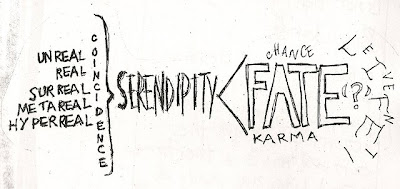 Hot Milk Presents: How Mystery Science Theatre 3000 Changed My Life, Or, 13 Lessons I learned from the Best TV Show Ever
Hot Milk Presents: How Mystery Science Theatre 3000 Changed My Life, Or, 13 Lessons I learned from the Best TV Show EverBy Tyler Hauck
www.hotmilk.org
Mystery Science Theatre 3000 (MST3K) was a TV show that featured a guy (“not too different from you or me”) and some robots stuck on a satellite and forced to watch really bad movies. To keep his sanity he, and the robots, made fun of the movies. It was basically just B-movies with commentary, and, if you’ve never seen it before and think the concept is insane, it really did exist.
It wasn’t shown on TV where I lived as a kid (in fact, I don’t know if it’s ever been shown on TV anywhere outside of America), so I found out about the show in a kind of ridiculous manner: fan fiction. Not fan fiction about the show, but rather bad X-Men fan fiction that other people made fun of by writing in the MST3K characters making fun of the story. The first time I ever saw a picture of what the robots looked like (in an issue of Mad magazine of all places) I was actually kind of upset, because I thought they looked so crummy.
Eventually I managed to track down some episodes of the show, but even today I’ve only seen maybe half a dozen of them. I still think it’s a pretty awesome idea, and I’m sure someday I’ll actually manage to watch more of them, or of the various spin offs that have been produced.
Hauck’s seen a lot more of the show than me. In fact he may have seen every episode, and if not, he’s seen most of them. The fact that he made this zine ten years after the show stopped being produced shows that MST3K had a major impact on his (and other people’s) lives. At the least MST3K helped create a market for all the terrible retro and genre films of the past. Would Mexican wrestler El Santo be as well known without this show? Would people purposefully seek out watching bad films just to make fun of them without MST3K making you think it was fun to do that? Okay, well probably. But this show totally helped that movement along.
However, Hauck has taken away more than just the pleasure of laughing at old crummy movies from MST3K; he’s learned thirteen lessons that changed his life.
In between lists of the best songs, skits, inventions, and best and worst films, Hauck presents the things he has learned. And what things! The idea of using old films as primary source documents of the past to learn about how people used to live, discovering that lots of people who have made good stuff have also made a lot of crap, that your heroes are imperfect, that poorly dubbed foreign films still show you how people live in other countries, that being amateur isn’t the same as being bad, and more.
Even if you already love MST3K and know these things, you can still learn stuff from this zine. Did you know that in the early seasons a lot of the props and materials they used for the show were dumpstered? (Awesome!) Did you know that the films of Aleksandr Ptushko (The Sword and the Dragon, The Magic Voyage of Sinbad) are actually good? I’ve never even seen any of the episodes that feature his films, but based on the descriptions of them here I’m going to have to go and track them down, along with some more episodes of MST3K.
Let’s hope someone still keeps circulating the tapes.








































